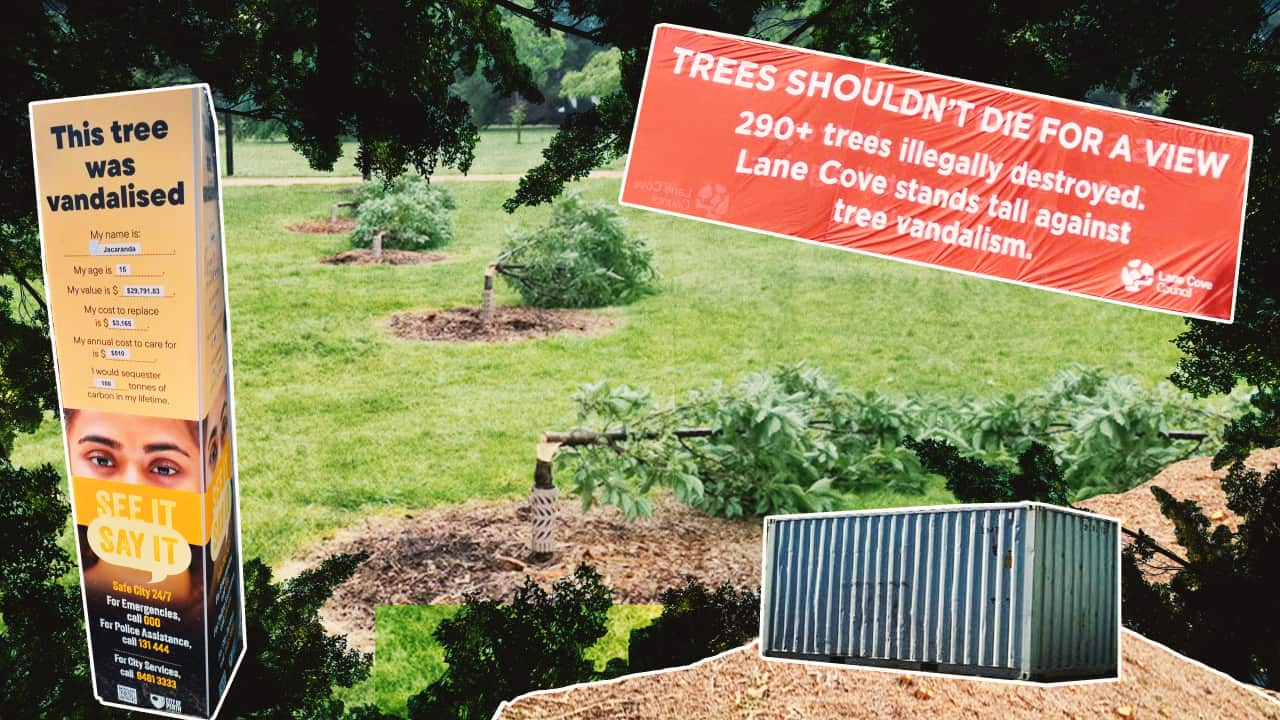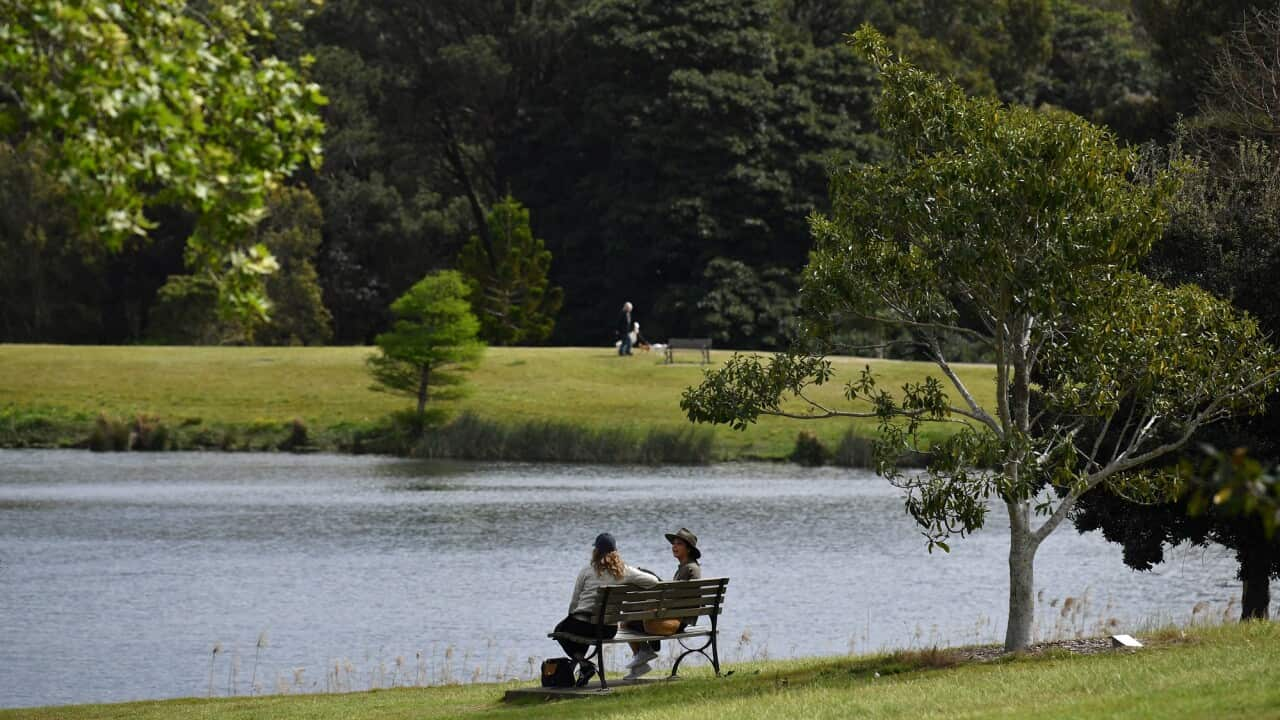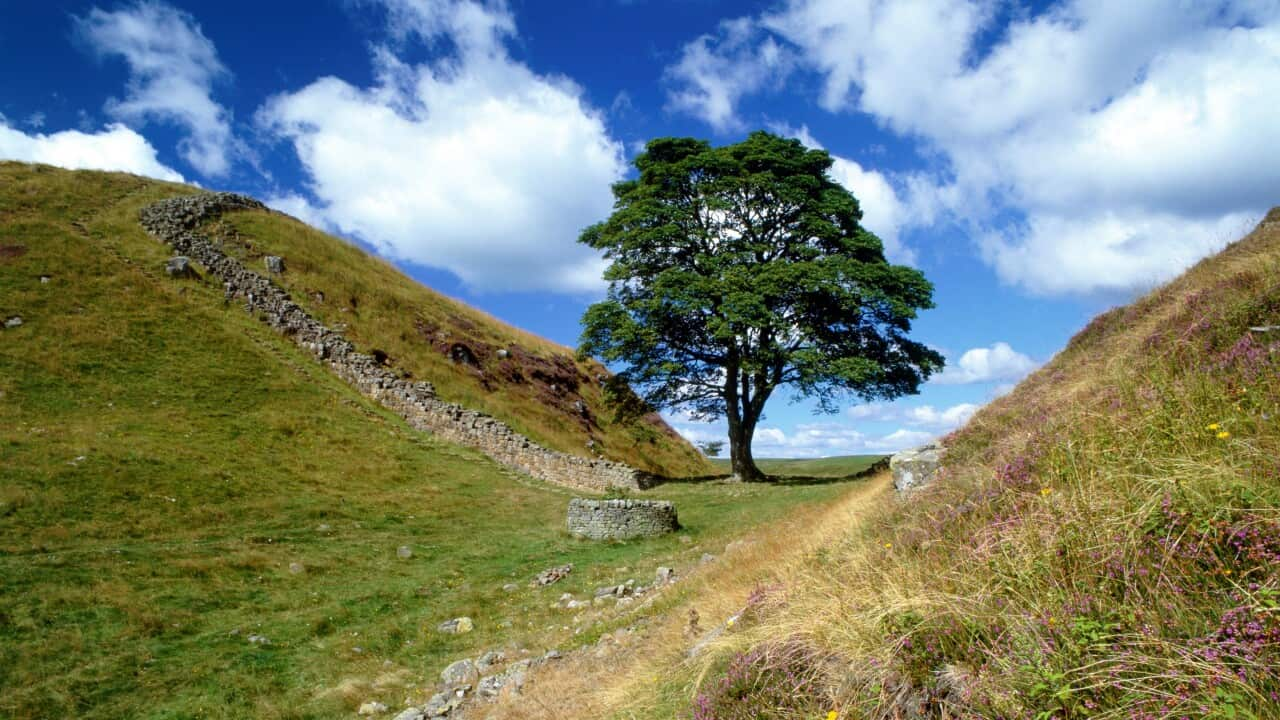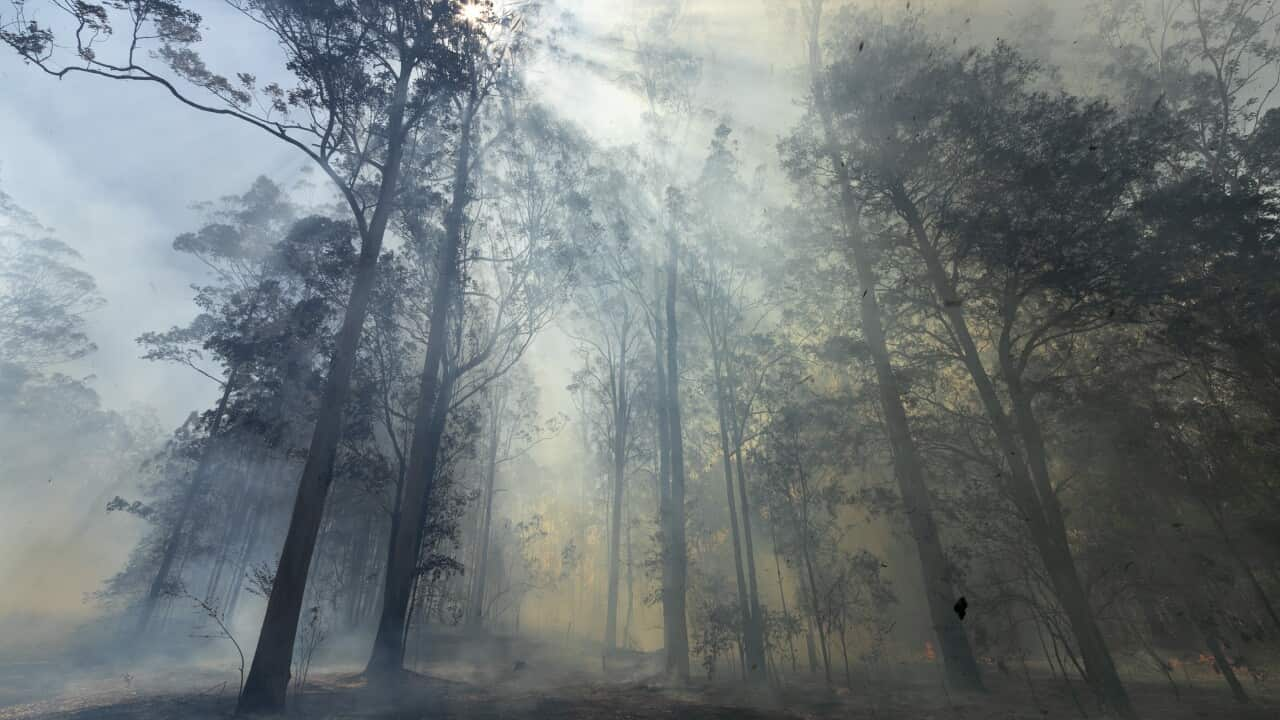It's the environmental crime that's left one local council asking: Why?
The City of Glen Eira in Victoria was hit last week with its first-ever act of widespread tree vandalism leaving an estimated $200,000 in damages. Police are investigating, but the motive remains unknown.
It's not just a problem the council in Melbourne's inner-east is grappling with. In November last year, about 300 trees were killed at a reserve in Longueville, Sydney. Lane Cove Council mayor Scott Bennison said it was the worst act of environmental vandalism in the area's history.
In the same month, the parks in Glen Eira were targeted, and all but one of 20 newly planted bottlebrush and paperbark trees in Ocean Reef, Perth, were chopped down. It was the latest in a series of attacks there, with 56 trees poisoned or cut down in the last two years.
But what drives someone to target trees?
Do some people just hate trees?
When you think of tree vandalism, you might think of some people impulsively lashing out at shrubs and trees.
While there are likely some among us who aren't too fond of our green friends, it's not quite that simple.
In recent years, there have been several cases of large-scale tree vandalism in which hundreds of trees were illegally hacked away at or poisoned at night.

A tree vandal recently targeted several parks in the City of Glen Eira in Victoria. Source: Facebook / Glen Eira City Council
"This large-scale removal of trees has really become a phenomenon in the last few years," Gregory Moore told SBS News.
"These major events have certainly become more common. Up until about ten years ago, we'd be talking about a few trees [vandalised] ... But these days, we are starting to talk about hundreds of trees."
Motive is key to this increase in tree destruction, which often has to do with money, Moore said.
Trees near bodies of water are common victims. Longueville, Castle Cove, and Brighton-Le-Sands in Sydney have all experienced mass tree destruction in the last year — actions likely motivated by a desire for elusive water views.
Waterfront homes in Sydney can attract an average price premium of 118 per cent, according to real estate consultancy Knight Frank's International Waterfront Index.

Lane Cove Council erected a banner after 300 trees were destroyed at a reserve in Longueville. Source: Supplied / Lane Cove Council
But now, more curious instances of tree vandalism are cropping up.
Tree destruction, but no views
The most recent destruction in Glen Eira is particularly puzzling, as the trees destroyed were in eight parks. There is no view they are obstructing. If anything, the trees are the view.
In response to the incident, Niall McDonagh, director of sustainability, assets and leisure at Glen Eira City Council, said they've seen acts of vandalism in their parks before, but never to this extent.
"Until this event, vandalism has generally appeared to be random and of only small handfuls of trees and plants in one location," he told SBS News.
"This event is the first widespread instance of targeted tree destruction that we have experienced."
Almost 200 young trees and shrubs were illegally cut down across eight parks and reserves across the Melbourne area. Some were cut at the base with a handsaw, and others were completely ripped from the ground.
The estimated cost of repair and replantings is estimated to be nearly $200,000, according to the council and some trees damaged were rare and may not be able to be replaced.
While there isn't a clear motive, Moore speculates it may have been someone with a "gripe" against the council.
"There's a difference between this one and many of the others because of the scale and because there doesn't appear to be an obvious gain for an individual or a group of individuals," he said.

Gregory Moore, senior research associate at the University of Melbourne, says the punishment for tree vandalism doesn't fit the crime. Source: Supplied / Gregory Moore
Punishment not fitting the crime
While motives can vary, there are concerns punishments aren't severe enough to deter vandals.
Councils can issue on-the-spot fines for illegal tree removal, and those responsible for acts of criminal damage can face fines up to $218,000 and a maximum penalty of 10 years in prison in Victoria.
However, charging offenders is a difficult task.
"If you look for prosecutions on tree vandalism, there's relatively few of them because it's very hard to get absolute solid evidence that this was the person who vandalised the trees, even when everybody knows who did it," Moore said.
Surveillance is often limited in areas where tree vandalism occurs. Additionally, battery-operated chainsaws are sometimes used, which are relatively quiet, especially if there's traffic nearby.
LISTEN TO

Industry and activists rally to tackle biodiversity crisis
SBS News
04/10/202407:59
In some instances, the sheer amount of destruction suggests the involvement of more than one person, and it's a pretty tough gig to find vandals.
This combination means it's incredibly difficult to find suspects, let alone prosecute them.
On top of that, councils like Willoughby in Sydney's lower north shore encounter extra barriers in charging people.
"In all instances of investigating tree vandalism, the burden of proof often requires us to source substantive evidence," Willoughby Council told SBS News.
In rare cases where there is a charge, Moore said: "The punishment doesn't fit the crime."
This is particularly true for property developers, who may serve to earn more from tree destruction.
Last year in Melbourne, a developer was given permission to build on land after illegally clearing vegetation.
From November 2019 to January 2020, the company cleared an estimated 1.4 hectares of vegetation. They were criminally convicted and fined $225,000 in the Victorian County Court.
However, the Victorian Civil and Administrative Tribunal (VCAT) later approved the company to build a multi-million dollar development on the site due to this absence of vegetation.
In making its decision, VCAT cited its high industrial value and approved the $6.8 million project with conditions for the developer to relocate endangered species and fund environmental offsets.

Shipping containers were placed on a beach in Brighton-Le-Sands in NSW in a creative way to prevent tree vandalism. Credit: St George and Sutherland Shire Leader
Councils fighting back
In the absence of criminal punishment, councils have taken more creative methods in the hope of stopping tree vandalism.
Many councils have chosen to erect large banners in the place of destroyed trees in the hope of disincentivising vandals who may be motivated by gained views.
Lane Cove City Council made headlines in September when it erected a seven-metre long, two-metre high, bright orange banner in response to the destruction of trees at Longueville.
The banner was created to obstruct any potential harbour views the culprits may have benefited from, with a sign reading: "Trees shouldn't die for a view."
That banner will stay in place until the new trees reach their original height, which might take years.
Other councils have gone for a more drastic approach, including Sydney's Brighton-Le-Sands, which placed three large shipping containers on its foreshore to block any potentially gained ocean views after trees were hacked down in 2021.
The containers are still in place today.
Other councils have gone with an educational approach, quantifying the damage.
The City of Perth placed a sign next to a damaged Jacaranda with monetary values applied to the tree, as well as carbon offset figures. In April, the council also upped penalties for illegal tree destruction from $500 to $5,000.

In the City of Perth, tree vandalism is approached through an educational lens. Credit: Reddit
A change in attitude
While tree vandalism is still rampant, Moore said that a big way we can prevent it in the future is by educating society on the benefits of trees beyond simple aesthetics.
"They do a huge amount of unseen work in our environments.
"They shade. They cool. They soak up water in storm events to stop local flooding. They provide a habitat for birds and biodiversity. They sequester carbon. They improve your health.
"In our society, many of us don't realise that they’re not just there to make things pretty."













